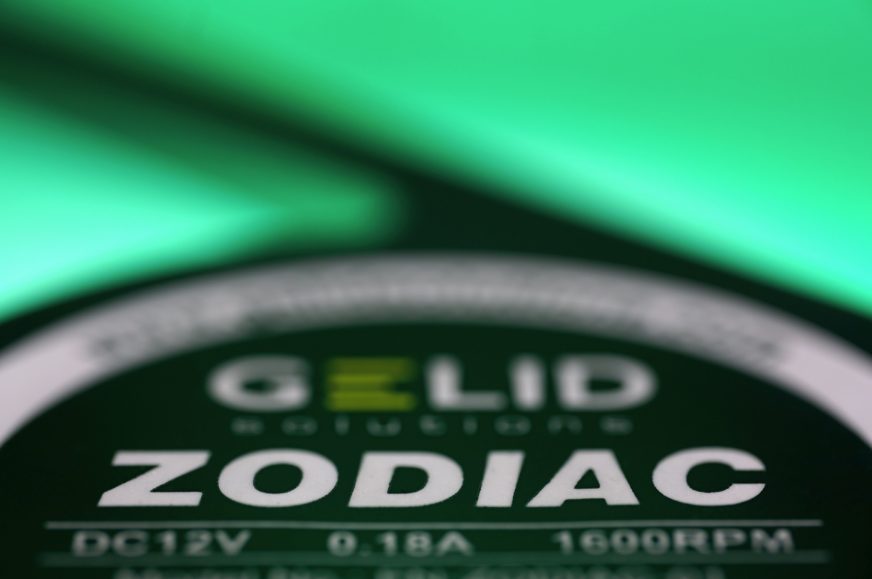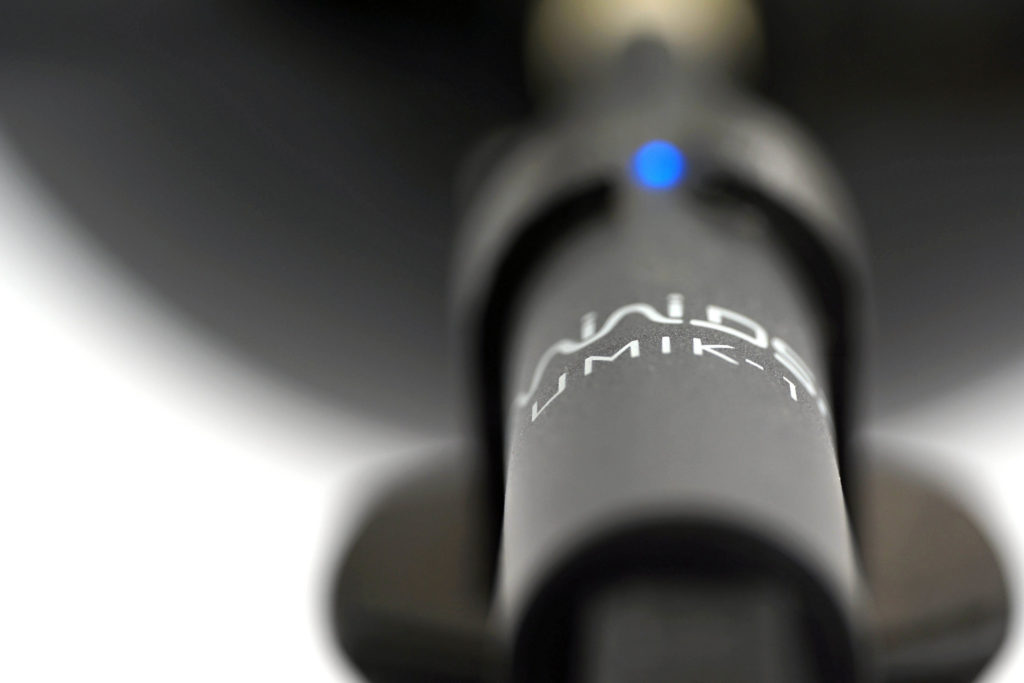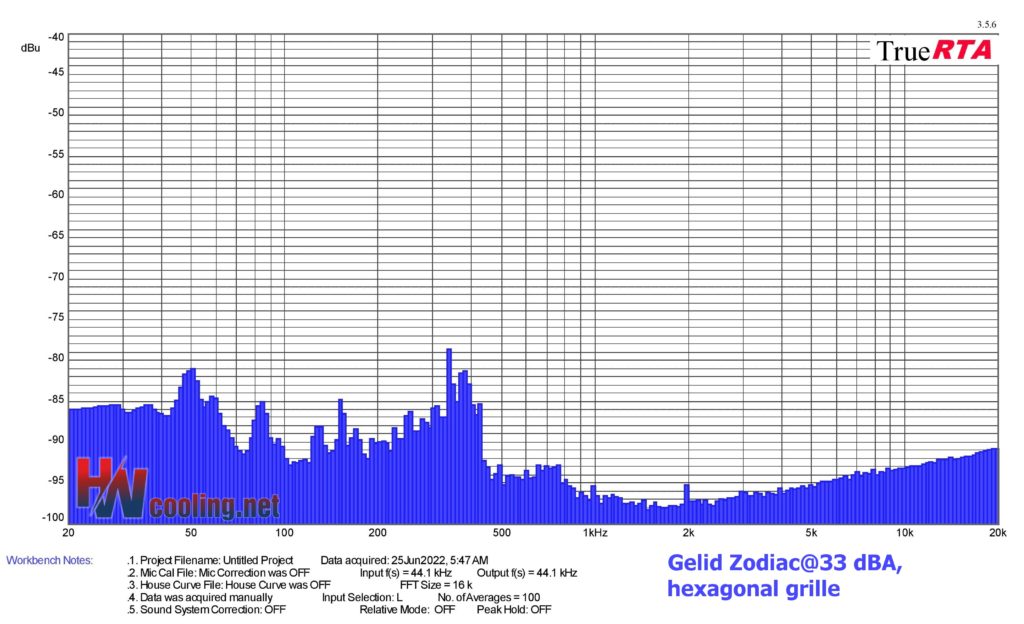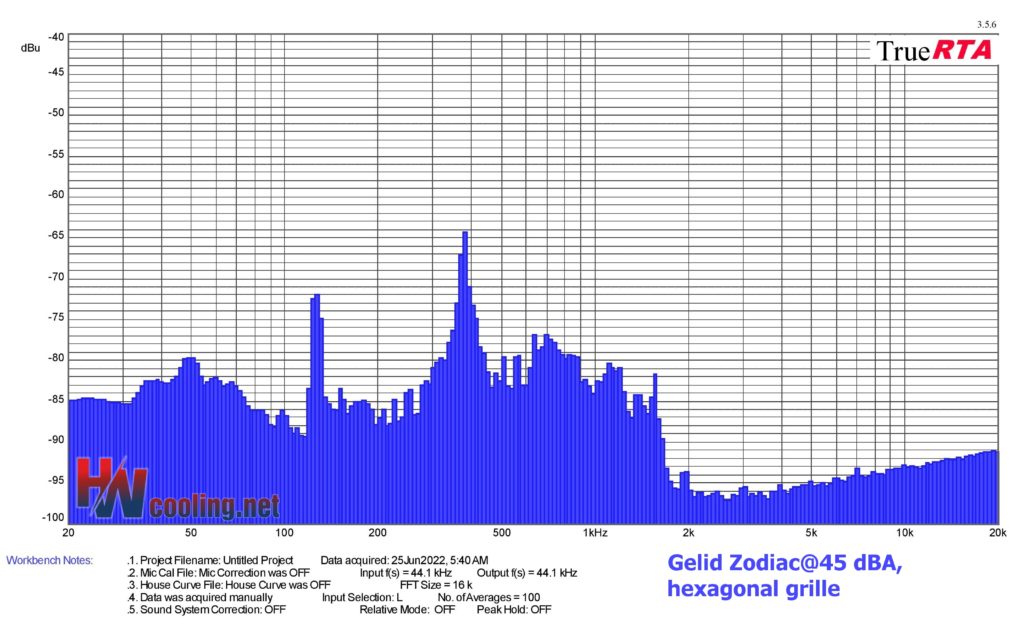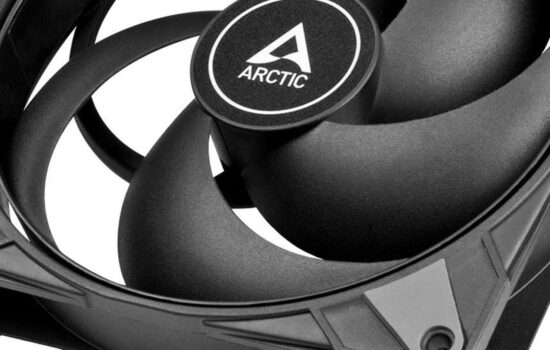Results: Frequency response of sound with a hexagonal grille
Aside from whether the fan is named after the zodiac or a serial killer from California, we know all about Gelid’s latest fan. In the end, the inspiration may stem from the latter as well. After all, it has a backlight option and at the same time “kills”, performance-wise, the price-equivalent fans without it. And attractive models at that. But there is one thing that can erase all the good features.
Results: Frequency response of sound with a hexagonal grille
Measurements are performed in the TrueRTA application, which records sound in a range of 240 frequencies in the recorded range of 20–20,000 Hz. For the possibility of comparison across articles, we export the dominant frequency from the low (20–200 Hz), medium (201–2,000 Hz) and high (2,001–20,000 Hz) range to standard bar graphs.
However, for an even more detailed analysis of the sound expression, it is important to perceive the overall shape of the graph and the intensity of all frequencies/tones. If you don’t understand something in the graphs or tables below, you’ll find the answers to all your questions in this article. It explains how to read the measured data below correctly.
Noise levels in the tables below -85 dBu (but watch out for the negative sign, -70 dBu is louder than -80 dBu) can be ignored. They are in fact extremely weak and always far below the limit of human perception, and are often defined by the “noise” of the measurement string. Therefore, do not take even the dominant frequencies within the treble band that exceed 12 kHz too much into account.
| Fan | Dominant sound freq. and noise level, hexagonal grille@33 dBA | NF-F12 PWM | NF-A15 PWM | ||||
| Low range | Mid range | High range | |||||
| Frequency [Hz] | Noise level [dBu] | Frequency [Hz] | Noise level [dBu] | Frequency [Hz] | Noise level [dBu] | ||
| Gelid Zodiac | 50,4 | -81,0 | 339,0 | -78,7 | 19330,5 | -90,7 | |
| Fractal Design Dynamic X2 GP-12 PWM | 38,9 | -75,4 | 339,0 | -79,5 | 18780,243 | -90,9 | |
| BeQuiet! Pure Wings 2 (BL039) | 47,6 | -79,7 | 380,5 | -81,2 | 19330,5 | -90,9 | |
| Gigabyte Aorus 120 ARGB | 146,7 | -82,0 | 369,7 | -82,0 | 19330,5 | -90,9 | |
| Arctic BioniX P120 A-RGB | 169,5 | -84,7 | 329,4 | -70,5 | 19330,5 | -90,8 | |
| Akasa OTTO SF12 | N/A | N/A | N/A | N/A | N/A | N/A | |
| Cooler Master SickleFlow 120 ARGB | 47,6 | -82,0 | 1076,3 | -81,9 | 18780,2 | -90,9 | |
| Alphacool SL-15 PWM | N/A | N/A | N/A | N/A | N/A | N/A | |
| Arctic BioniX F120 | 169,5 | -84,7 | 329,4 | -70,5 | 19330,5 | -90,8 | |
| SilverStone SST-AP123 | SilverStone SST-AP123 | 58,2 | -80,8 | 302,0 | -77,3 | 19897,0 | -90,8 |
| Noctua NF-P12 redux-1700 PWM | 100,8 | -81,6 | 329,4 | -69,8 | 19897,0 | -90,9 | |
| SilentiumPC Fluctus 120 PWM | 100,8 | -82,7 | 369,7 | -79,9 | 19330,5 | -90,8 | |
| MSI MEG Silent Gale P12 | 100,8 | -81,2 | 369,7 | -80,3 | 19330,5 | -91,0 | |
| Asus ROG Strix XF120 | 38,9 | -79,7 | 349,0 | -72,4 | 19897,0 | -90,9 | |
| Akasa Vegas X7 | 100,8 | -85,3 | 359,2 | -80,3 | 19330,5 | -90,9 | |
| Reeven Coldwing 12 | 92,4 | -79,8 | 369,7 | -79,7 | 19897,0 | -90,9 | |
| Reeven Kiran | 97,9 | -84,4 | 391,7 | -77,8 | 19897,0 | -90,8 | |
| SilentiumPC Sigma Pro 120 PWM | N/A | N/A | N/A | N/A | N/A | N/A | |
| SilentiumPC Sigma Pro Corona RGB 120 | 92,4 | -83,0 | 369,7 | -77,9 | 18780,2 | -90,8 | |
| SilverStone SST-AP121 | 113,1 | -80,9 | 246,8 | -84,0 | 19330,5 | -90,9 | |
| SilverStone SST-FQ121 | 38,9 | -76,9 | 1522,2 | -81,7 | 18780,2 | -90,9 | |
| Xigmatek XLF-F1256 | 63,5 | -83,3 | 380,5 | -78,8 | 19897,0 | -90,9 |
| Fan | Dominant sound freq. and noise level, hexagonal grille@39 dBA | NF-F12 PWM | NF-A15 PWM | ||||
| Low range | Mid range | High range | |||||
| Frequency [Hz] | Noise level [dBu] | Frequency [Hz] | Noise level [dBu] | Frequency [Hz] | Noise level [dBu] | ||
| Gelid Zodiac | 50,4 | -80,5 | 380,5 | -73,2 | 19330,5 | -91,0 | |
| Fractal Design Dynamic X2 GP-12 PWM | 50,4 | -80,4 | 320,0 | -65,3 | 19330,5 | -90,8 | |
| BeQuiet! Pure Wings 2 (BL039) | 59,9 | -79,0 | 369,7 | -73,3 | 18780,2 | -90,8 | |
| Gigabyte Aorus 120 ARGB | 138,5 | -81,5 | 369,7 | -73,2 | 18780,2 | -90,9 | |
| Arctic BioniX P120 A-RGB | 151,0 | -82,0 | 219,8 | -62,2 | 19330,5 | -90,9 | |
| Akasa OTTO SF12 | N/A | N/A | N/A | N/A | N/A | N/A | |
| Cooler Master SickleFlow 120 ARGB | 130,7 | -81,8 | 369,7 | -75,4 | 2152,7 | -90,4 | |
| Alphacool SL-15 PWM | 146,7 | -76,8 | 369,7 | -73,2 | 18780,2 | -91,0 | |
| Arctic BioniX F120 | 47,6 | -82,0 | 369,7 | -72,0 | 19330,5 | -90,9 | |
| SilverStone SST-AP123 | SilverStone SST-AP123 | 100,8 | -80,7 | 339,0 | -73,4 | 18780,2 | -90,9 |
| Noctua NF-P12 redux-1700 PWM | 116,5 | -76,8 | 339,0 | -69,4 | 19330,5 | -90,8 | |
| SilentiumPC Fluctus 120 PWM | 146,7 | -78,0 | 586,9 | -72,7 | 18780,2 | -91,0 | |
| MSI MEG Silent Gale P12 | 164,7 | -80,6 | 339,0 | -71,1 | 19330,5 | -91,0 | |
| Asus ROG Strix XF120 | Asus ROG Strix XF120 | 92,4 | -77,5 | 369,7 | -70,1 | 19330,5 | -91,2 |
| Akasa Vegas X7 | 31,3 | -84,3 | 369,7 | -74,3 | 18780,2 | -90,8 | |
| Reeven Coldwing 12 | 123,4 | -71,2 | 380,5 | -71,3 | 18780,2 | -90,9 | |
| Reeven Kiran | 127,0 | -77,7 | 380,5 | -73,4 | 19330,5 | -90,8 | |
| SilentiumPC Sigma Pro 120 PWM | 63,5 | -83,4 | 380,5 | -74,0 | 2347,5 | -83,8 | |
| SilentiumPC Sigma Pro Corona RGB 120 | 134,5 | -72,0 | 369,7 | -75,1 | 19897,0 | -90,8 | |
| SilverStone SST-AP121 | 53,4 | -81,9 | 380,5 | -70,8 | 19330,5 | -91,0 | |
| SilverStone SST-FQ121 | 41,8 | -78,9 | 369,7 | -75,0 | 19330,5 | -91,1 | |
| Xigmatek XLF-F1256 | 50,4 | -70,3 | 246,8 | -72,7 | 19897,0 | -90,9 |
| Fan | Dominant sound freq. and noise level, hexagonal grille@45 dBA | NF-F12 PWM | NF-A15 PWM | ||||
| Low range | Mid range | High range | |||||
| Frequency [Hz] | Noise level [dBu] | Frequency [Hz] | Noise level [dBu] | Frequency [Hz] | Noise level [dBu] | ||
| Gelid Zodiac | 127,0 | -71,9 | 380,5 | -64,3 | 19330,5 | -91,1 | |
| Fractal Design Dynamic X2 GP-12 PWM | 123,4 | -75,0 | 1566,8 | -76,7 | 2215,8 | -89,6 | |
| BeQuiet! Pure Wings 2 (BL039) | 75,5 | -78,2 | 369,7 | -69,9 | 19330,5 | -90,9 | |
| Gigabyte Aorus 120 ARGB | 164,7 | -78,7 | 678,1 | -66,8 | 19897,0 | -90,7 | |
| Arctic BioniX P120 A-RGB | 130,7 | -70,6 | 219,8 | -62,2 | 18780,2 | -90,7 | |
| Akasa OTTO SF12 | 160,0 | -72,4 | 369,7 | -66,4 | 4431,5 | -88,3 | |
| Cooler Master SickleFlow 120 ARGB | 127,0 | -74,1 | 380,5 | -66,0 | 6267,2 | -90,8 | |
| Alphacool SL-15 PWM | 134,5 | -72,2 | 369,7 | -66,7 | 19330,5 | -90,8 | |
| Arctic BioniX F120 | 58,2 | -78,7 | 369,7 | -68,3 | 18780,2 | -90,7 | |
| SilverStone SST-AP123 | SilverStone SST-AP123 | 130,7 | -79,2 | 339,0 | -69,6 | 18780,2 | -90,9 |
| Noctua NF-P12 redux-1700 PWM | 142,5 | -72,8 | 586,9 | -65,0 | 18780,2 | -90,8 | |
| SilentiumPC Fluctus 120 PWM | 174,5 | -75,1 | 349,0 | -62,1 | 2957,7 | -90,3 | |
| MSI MEG Silent Gale P12 | 130,7 | -72,7 | 415,0 | -67,2 | 2487,1 | -89,3 | |
| Asus ROG Strix XF120 | Asus ROG Strix XF120 | 119,9 | -73,4 | 604,1 | -69,6 | 19330,5 | -90,9 |
| Akasa Vegas X7 | 33,6 | -81,5 | 427,1 | -70,2 | 18780,2 | -90,9 | |
| Reeven Coldwing 12 | 160,0 | -64,7 | 369,7 | -67,7 | 19897,0 | -91,0 | |
| Reeven Kiran | 155,4 | -73,7 | 369,7 | -69,7 | 19330,5 | -90,8 | |
| SilentiumPC Sigma Pro 120 PWM | 130,7 | -77,8 | 369,7 | -68,1 | 4431,5 | -90,1 | |
| SilentiumPC Sigma Pro Corona RGB 120 | 20,3 | -64,8 | 369,7 | -73,0 | 3044,4 | -89,2 | |
| SilverStone SST-AP121 | 130,7 | -78,0 | 570,2 | -64,9 | 18780,2 | -91,2 | |
| SilverStone SST-FQ121 | 169,5 | -64,4 | 246,8 | -77,4 | 19330,5 | -91,0 | |
| Xigmatek XLF-F1256 | 58,2 | -74,2 | 678,0 | -63,8 | 19330,5 | -90,9 |
- Contents
- Gelid Zodiac in detail
- The basis of the methodology, the wind tunnel
- Mounting and vibration measurement
- Initial warm-up and speed recording
- Base 7 equal noise levels…
- .. and sound color (frequency characteristic)
- Static pressure measurement…
- … and airflow
- Everything changes with obstacles
- How we measure power draw and motor power
- Measuring the intensity (and power draw) of lighting
- Results: Speed
- Results: Airlow w/o obstacles
- Results: Airflow through a nylon filter
- Results: Airflow through a plastic filter
- Results: Airflow through a hexagonal grille
- Results: Airflow through a thinner radiator
- Results: Airflow through a thicker radiator
- Results: Static pressure w/o obstacles
- Results: Static pressure through a nylon filter
- Results: Static pressure through a plastic filter
- Results: Static pressure through a hexagonal grille
- Results: Static pressure through a thinner radiator
- Results: Static pressure through a thicker radiator
- Results: Static pressure, efficiency by orientation
- Reality vs. specifications
- Results: Frequency response of sound w/o obstacles
- Results: Frequency response of sound with a dust filter
- Results: Frequency response of sound with a hexagonal grille
- Results: Frequency response of sound with a radiator
- Results: Vibration, in total (3D vector length)
- Results: Vibration, X-axis
- Results: Vibration, Y-axis
- Results: Vibration, Z-axis
- Results: Power draw (and motor power)
- Results: Cooling performance per watt, airflow
- Results: Cooling performance per watt, static pressure
- Airflow per euro
- Static pressure per euro
- Results: Lighting – LED luminance and power draw
- Results: LED to motor power draw ratio
- Evaluation





